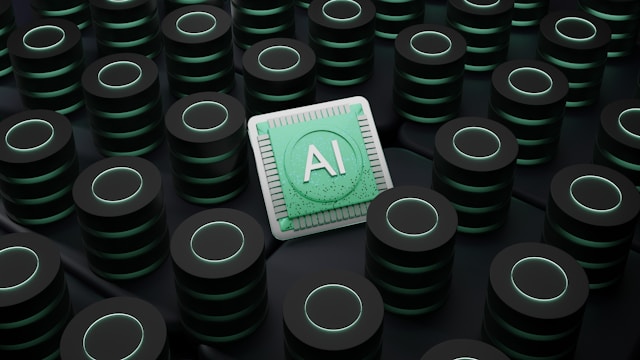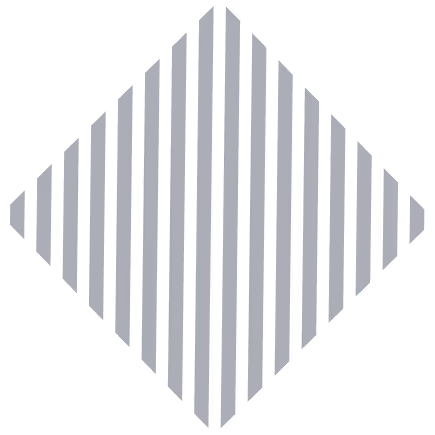AI Pre-Screening Interview Questions Examples With Tips to Ace Your Next Job

Ever feel like interviews are more about timing and logistics than actual talent? AI pre-screening changes that. It gives candidates the freedom to respond on their own time while helping recruiters get straight to what matters: skills, experience, and fit.
With platforms like HRMLESS, pre-screening interviews become smarter and faster. You ask the right questions, collect meaningful responses, and let AI handle the scoring and scheduling, cutting down ghosting, no-shows, and the back-and-forth.
In this blog, we will talk about:
- What AI pre-screening is and how it fits into a modern hiring strategy
- Sample AI interview questions by role and type, plus how to build your own
- Tips for candidates to craft strong answers and stand out in AI interviews
Let’s unpack how AI pre-screening transforms interviews, for recruiters and candidates alike.
What Is AI Pre-Screening in Hiring?
AI pre-screening uses automated tools to review candidates early in the hiring process. It quickly identifies which applicants best fit your job requirements. This technology improves candidate engagement, reduces manual work, and enables faster decision-making.
How AI Pre-Screening Works?
AI pre-screening utilizes software that analyzes candidate responses, resumes, or other assessment tools. You set your criteria, skills, experience, whatever matters. The AI scores applicants against these rules, minus the bias.
Candidates can complete interviews or assessments at any time, not just during business hours. The system automatically scores and ranks them, so you can focus on the ones who actually make sense for the role.
Your ATS (Applicant Tracking System) can integrate with AI tools like ours. Automation sends invites, collects answers, and schedules follow-ups, no extra effort from you.
Benefits of Using AI for Interviews
AI-powered interviewing streamlines the hiring process, saves time, and ensures a fairer and faster experience for both recruiters and candidates.
- Streamlined Pre-Screening – AI handles routine tasks such as scheduling, scoring, and follow-ups, reducing delays and minimizing candidate ghosting.
- Instant Communication – With automated SMS or email outreach, candidates stay engaged and informed throughout the process.
- Faster Talent Discovery – AI filters applicants efficiently, helping you identify top talent sooner without spending hours on manual screening.
- Fair and Objective Evaluation – Every candidate is assessed using the same consistent criteria, minimizing bias and improving hiring accuracy.
- 24/7 Candidate Flexibility – Applicants can complete pre-screening anytime, improving accessibility and enhancing the overall candidate experience.
AI interview tools help recruiters hire smarter and faster, reducing bias, boosting engagement, and creating a seamless experience for everyone involved.
Challenges and Limitations
While AI makes hiring faster and more efficient, it’s not without its challenges. Here are key limitations to watch for:
- Data and Criteria Dependence – AI’s accuracy depends on the quality of the data and interview criteria you provide. Biased or poorly structured questions can lead to overlooking strong candidates.
- Limited Human Touch – Some candidates prefer human interaction and may feel uneasy with automated systems. AI also can’t read body language, tone, or soft skills effectively.
- Technical Issues – Glitches or weak integrations with your ATS or communication tools can disrupt the experience for both candidates and recruiters.
- Potential Bias – If your dataset reflects past hiring biases, the AI may unintentionally reinforce them instead of removing them.
- Platform Compatibility – Using tools that integrate smoothly with existing HR systems ensures a seamless hiring process.
Platforms like ours address these challenges by combining AI efficiency with fairness and transparency, ensuring a smoother and more balanced hiring experience.
Key Types of AI Pre-Screening Interview Questions
AI pre-screening interviews encompass a variety of question types to assess different skills and fit. You’ll get questions about your past behavior, how you’d handle tricky situations, and your technical chops. Each type gives a different angle on your abilities and helps keep the hiring process moving.
Behavioral Questions Examples
Behavioral questions dig into how you’ve acted in real work situations. They reveal your habits, teamwork style, and how you solve problems.
You might get:
- Describe a situation where you effectively managed a conflict at work.
- Describe a situation where you had to meet a tight deadline.
- Give an example of how you worked as part of a team.
These want honest, clear stories. AI tools like ours look for specific actions and results, so everyone gets a fair shake. Your answers help demonstrate your true work style and how you might align with the company.
Situational Questions Examples
Situational questions ask what you would do in a future scenario. They test your decision-making and critical thinking.
Some examples:
- What would you do if a customer were unhappy with a product?
- How would you prioritize tasks when everything is urgent?
- Imagine a team member misses a deadline; how do you respond?
These let you show your approach to problems before they happen. AI interviewers score your logic and problem-solving, making it easier for hiring teams to spot who’s ready for real-world challenges.
Technical Questions Examples
Technical questions test your job-specific knowledge or skills. It depends on the role, but often you’ll get quizzes or problem-solving prompts.
Examples:
- Explain how you would debug a software error.
- What steps do you take to ensure data accuracy?
- Describe your experience with specific tools or software.
AI systems like ours grade these answers quickly and objectively. They help you zero in on qualified candidates and make sure technical skills actually line up with the job. It’s a good way to spot your top picks early.
Sample Questions for AI Pre-Screening Interviews
When you’re building AI pre-screening questions, keep them clear and relevant for the job level. Good questions quickly show practical skills, problem-solving, and culture fit. That keeps your hiring process efficient and focused on the best people.
Entry-Level Candidate Examples
Entry-level roles need questions that check basic skills and motivation.
Try:
- What interests you about this role?
- Describe a time you worked in a team.
- How do you manage deadlines?
These help you spot individuals who can communicate effectively and demonstrate a willingness to learn. You can toss in a simple scenario question, too, just to see how they’d handle a basic challenge.
Multiple-choice or short video answers work well for quick AI scoring. HRMLESS can rank candidates and help you move the top ones forward.
Mid-Level Role Examples
Mid-level candidates should be asked questions that delve deeper into their experience and expertise.
Ask things like:
- How have you handled a complex project?
- Describe your process for troubleshooting work-related issues.
- Describe a time you improved a workflow or system.
Focus on problem-solving, team leadership, and technical skills. Open-ended questions—video or text, let the AI analyze not just what they say, but how they say it. You want your AI pre-screening to weed out individuals who aren’t ready for more responsibility, while highlighting those who are.
Leadership Position Examples
For leadership roles, questions should focus on highlighting decision-making and management skills.
Try:
- How do you motivate a team during challenging projects?
- Describe a time you resolved a conflict at work.
- What is your approach to setting goals and tracking progress?
These reveal emotional intelligence, strategic thinking, and leadership style. Video responses and behavioral questions let the AI pick up on tone, confidence, and clarity.
How to Craft Effective AI Interview Questions
To get the best insights from AI pre-screening, your questions need to be clear and tied to the job. Avoid bias to keep things fair. This helps you spot qualified candidates fast, while giving everyone a shot.
Matching Job Requirements
Start by identifying the key skills and qualities your job actually requires. Use specific questions that ask candidates about their experience, knowledge, or problem-solving related to those skills. If you’re hiring for customer service, ask about handling demanding customers or juggling multiple tasks.
Keep questions focused and measurable. Skip vague stuff like “Tell me about yourself.” Instead, go with:
- “Describe a time you resolved a challenging customer issue.”
- “How do you prioritize tasks when busy?”
This lets the AI score answers consistently and helps predict fit. Mix in technical, behavioral, and situational questions to cover your bases.
Ensuring Unbiased Questioning
Bias can sneak in, so aim for neutral questions. Don’t use phrases or topics that favor one group; avoid anything about age, gender, or personal background. Use straightforward, inclusive language. For example, ask everyone how they handle deadlines, rather than how many years of experience they have (which might skew the results toward older candidates).
Test your questions to make sure the AI treats all answers fairly. Our tool trains algorithms to score without prejudice, so you move diverse, qualified candidates forward based on skill and fit. That’s a fairer, more efficient process.
Best Practices for Answering AI Pre-Screening Questions
If you’re answering AI pre-screening questions, stay clear, precise, and relevant. Use your chance to show how your skills match the job. No need for long-winded or vague answers.
Preparing Relevant Responses
Start by reading the job description closely. Pick out the key skills and experiences the employer wants. Shape your answers to highlight those. Stick to real examples from your past work. Instead of “I’m a quick learner,” talk about when you picked up a new skill under pressure.
Use keywords from the job posting; AI tools often look for these when ranking candidates. But don’t overdo it with buzzwords that don’t fit your story. Practice common questions ahead of time. It helps you stay focused and avoid rambling. Our AI Interviewer tools let you practice on your own schedule, which is handy.
Using Clear and Concise Language
Keep answers short and punchy. Aim for one to three sentences per answer. Skip unnecessary details that might confuse the AI or the recruiter. Use simple, direct words. For example, say “managed a team of five,” instead of “responsible for overseeing staff.” It’s clearer and stronger.
Check your grammar and spelling. Clean, professional language makes a difference. Avoid slang, jargon, or overcomplicated phrases. You want to be understood, even by a machine. Straightforward, relevant answers give you a better shot at moving to the next round.
Evaluating AI Pre-Screening Results
When you use AI to screen candidates, knowing how to read the data matters. You need to understand AI-generated scores and insights. Blending these results with your own judgment helps you pick the best talent without letting bias creep in.
Interpretation of Response Data
AI tools break down candidate answers into scores and patterns, including skill matching, the completeness of the answers, response time, and more. A low score might flag a weak spot, while strong answers show someone’s ready for the role.
Look for consistency across answers, rather than focusing on just one strong or weak response. Nerva AI, which powers our tool, applies the same criteria to everyone, ensuring fairness and eliminating personal bias. Use this data to spot trends.
Compare scores in key skills and personality traits that matter for your job. Visual dashboards help you quickly see who checks your must-have boxes.
Integrating AI Findings with Human Review
AI results don’t replace your judgment; they’re just another tool. Reviewers should use AI scores as part of the picture. Take time to watch the candidate's video answers or read notes on problem-solving and communication. Watch for any false negatives or positives the AI might miss.
Sometimes a candidate’s tone, enthusiasm, or explanation adds something numbers can’t capture. That’s where your team’s insight matters. Letting AI handle initial screening frees you up for deeper interviews.
HRMLESS only invites the top candidates to schedule live interviews, so you dodge scheduling headaches and no-shows. You spend your energy on quality hires, not busywork.
Future Trends in AI Pre-Screening Interviews
AI pre-screening interviews are getting smarter and, honestly, a lot more flexible. Before long, you’ll see AI tools that let candidates jump into interviews whenever it works for them—no more waiting around, fewer bottlenecks. That’s a pretty big deal if you want to focus on top talent and skip the endless back-and-forth.
Self-scheduling’s about to get a whole lot easier, too. AI will help candidates select interview slots that actually fit their schedules, which should reduce no-shows and ghosting—a constant headache. Tools like HRMLESS already use automated scheduling to keep things moving instead of stalling out.
Voice engagement? That’s coming up fast. Soon, you’ll have candidates speaking naturally in AI interviews, making the whole thing feel less stiff and more like a real conversation. It’s not perfect, but it’s way better than reading off a script, right?
AI’s also getting sharper at analyzing people. It’s not just about resumes anymore—the tech is starting to pick up on skills, tone, and even intent. That means you get a better read on candidates right from the start, so you’re not wasting time on the wrong fits.
Integration’s another area to watch. Expect stronger integration with your ATS, HRIS, and any other systems you’re using. The goal is to streamline workflows without creating chaos. Our tool, powered by Nerva AI, is already doing a lot of this, helping you cut hiring time and improve candidate quality.
Here’s what’s on the horizon:
- 24/7 AI pre-screening interviews for your candidates
- Automated scoring and ranking of applicants
- Instant SMS and email reminders to keep candidates engaged
- Real-time analytics for tracking your hiring progress
If these trends keep up, hiring’s about to get a whole lot faster and easier to manage.
Final Thoughts
AI pre-screening interviews aren’t just a trend; they’re a more innovative way to hire. From filtering candidates more efficiently to reducing ghosting and boosting engagement, this approach helps you focus on the individuals who are actually the right fit. With platforms like HRMLESS, you can conduct interviews 24/7, receive instant scoring, and advance qualified candidates without the manual grind.
Whether you're building a startup team or scaling enterprise hiring, AI lets you work smarter and hire better. It’s time to fast-track your hiring with automated interviews that work around the clock. Book a demo now and see how HRMLESS simplifies your entire pre-screening process.
Frequently Asked Questions
Getting a grip on key AI ideas and common issues can really help you make the most of automated hiring tools. Let’s dig into how AI learns, how it handles mistakes, deals with data, and gives you results you can actually trust.
Can you explain the difference between supervised and unsupervised learning in AI?
Supervised learning’s pretty straightforward: you feed the AI labeled data—examples with the right answers, so it learns what’s correct. Unsupervised learning skips the labels. The AI just looks for patterns or groups on its own. Handy when you don’t have all the answers mapped out.
What are the key challenges you face while working with machine learning models?
Honestly, there are a few big ones: data quality, bias, and overfitting. If your data’s a mess, results will be too. Bias is tricky; it can sneak in and tip the scales unfairly. Overfitting occurs when a model becomes too closely tied to its training data and then struggles to perform well on new cases.
How would you approach creating a dataset for a new AI project?
First, I’d gather data that’s clean and actually fits the project goal. It needs to cover the range of scenarios that applicants might encounter. For supervised learning, careful labeling is key. I’d also balance the dataset to avoid bias and keep it fresh as hiring needs shift over time.
What is Neural Network backpropagation, and how does it work?
Backpropagation is how a neural network learns from its mistakes. The system checks the gap between what it predicted and what actually happened, then tweaks its settings to do better next time. This cycle repeats over and over until the AI becomes proficient at its assigned task, such as screening interviews.
Could you discuss a recent AI project you've worked on and the results you achieved?
We used HRMLESS’s AI pre-screening to automate candidate interviews around the clock. Time-to-hire dropped by 60%, and ghosting got cut in half. Candidates could complete interviews at their convenience, and recruiters could focus on top picks that surfaced automatically. Not bad, honestly.
What techniques do you use to prevent overfitting in your AI models?
To keep overfitting at bay, I usually lean toward simpler models, incorporate more training data when possible, and employ tricks like dropout, which involves randomly ignoring parts of the neural network as it learns. That way, the model doesn't become too fixated on every little detail and has a better chance of handling new data. It's a balancing act, honestly.
Featured
Subscribe to ournewsletter
Related posts
Explore the world of photography with our curated selection of
portfolio websites that showcase creativity and innovation.





